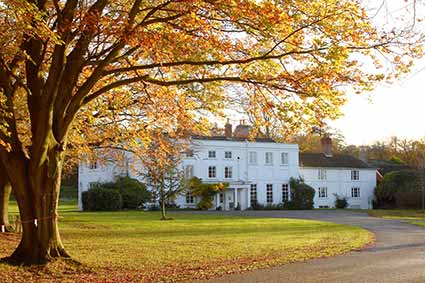Foxlease – the early years

A glance at the late 18th century Richardson, King and Driver map of the New Forest shows the Coxleaze estate to the south-west of Lyndhurst, adjacent to Coxleaze Wild Ground. Sited on an island of fertile land in the midst of acid, New Forest soils, Coxleaze was clearly a substantial family home at a time when many New Forest inhabitants lived in little more than hovels.
Set in 65 acres, and now known as Foxlease, the estate today is operated by Girlguiding UK as a training and activity centre.
But what a history has this estate. Domesday called it Cocherlei, and noted: ‘Aelfric and Agemund held 3 virgates of land….. Now it is in the Forest. Land for 2 ploughs. The value was 3 pounds’.
The house was originally the site of a Forest keeper’s lodge dating back to at least the 16th century. Royal connections followed. In 1667, Mabel, wife of John Cole of Odiham, petitioned King Charles II for a lease for her husband on the house and grounds as reward for her attendance on King Charles I during his imprisonment on the Isle of Wight. Indeed, Charles is said to have planted a tree, a Scots pine, in the garden behind the house.
Sir Philip Jennings Clerke, Bart., bought the lodge in around 1770 and set to work to create today’s rather grand, two-storey white stucco Georgian mansion, subsuming intact parts of the original, much smaller building.
Sir Philip was a man of considerable means who also owned Duddlestone Hall in Shropshire, and locally, it is thought, Northerwood House and part of Parkhill.
Born in around 1722 and baptised Philip Jennings, he changed his name to Jennings Clerke in the early 1760s. A Member of Parliament for Totnes between 1768 and 1788, Sir Philip gained the rank of Lieutenant-Colonel in the Horse Guards. He was created 1st Baronet Jennings Clerke of Duddlestone Hall on 26 October 1774, and died in January 1788. His only remaining son, Sir Charles Philip Jennings, died a few months later, whereupon the baronetcy became extinct.
It is now a matter of conjecture whether ‘Philips hill’, shown on the old map alongside Butts Lawn, recalls the estate’s distinguished occupant, but this seems highly likely. Certainly, the family is commemorated by an imposing tablet in Lyndhurst’s parish church, and the son, Sir Charles Philip Jennings, by a large marble monument, designed and carved by John Flaxman, R.A., a well-known illustrator, designer and sculptor of the day.
Both tablet and monument were originally in the Georgian church that preceded the current building, and both mention Foxlease, not the Coxleaze later used by Richardson, King and Driver - maybe both names were in use before Coxleaze was fully superseded by Foxlease.
By the 1870 Ordnance Survey map, the house is shown as Foxlease, whilst Richardson, King and Driver’s Coxleaze Wild Ground shows as High Coxlease Inclosure.
Adding to this name confusion, though, in 1901 another house, High Coxlease, was constructed within the inclosure grounds. This is now a school providing specialist education and residential care for boys.
Find out more about Foxlease
References:
Lyndhurst Historical Society publications: Roy Jackman
Lyndhurst – A Brief History and Guide: Georgina Babey and Peter Roberts
The History of Foxlease: Guide Association
Domesday Book, Hampshire: General Editor – John Morris
The Peerage
More links
Other related links
Search this site

Sadly, 58 animals were killed - 35 ponies, 13 cows, 8 donkeys and 2 sheep, whilst a further 32 were injured - 3 pigs, 9 donkeys, 11 cows and 9 ponies.
(Forty-three accidents occurred in daylight, 15 at twilight and 101 in the dark. Twenty-seven accidents were not reported by the driver involved).
Here's just one horrific example - Three donkeys killed in collision with van at notorious New Forest blackspot (Advertiser and Times)

